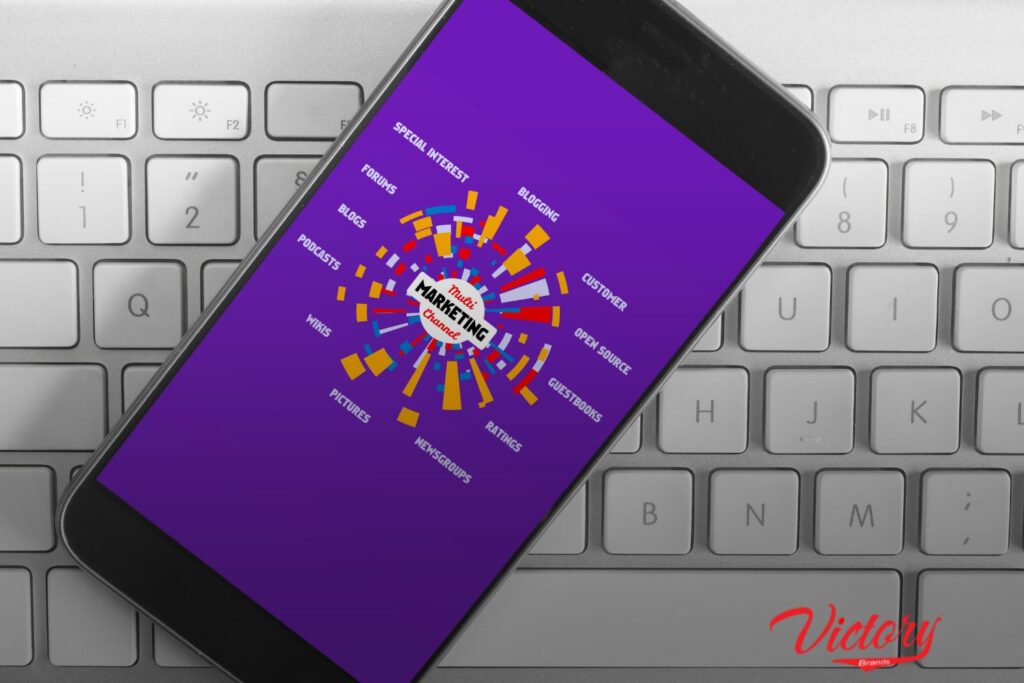Why Brand Consistency Matters Across Various Channels

Why Brand Consistency Matters Across Various Channels

With the rise of digital marketing and social media, customers interact with brands across various channels, including websites, social media platforms, email, and physical stores. Each of these touchpoints offers an opportunity for brands to connect with consumers, yet without a consistent presentation, even well-loved brands can feel fragmented or unreliable.
Let’s dive into why brand consistency is essential across various channels and how it can help build brand trust, loyalty, and impact.
What is Brand Consistency?
Brand consistency involves making sure that all brand elements—like logos, colors, messaging, and values—are cohesive and easily identifiable across every platform and touchpoint. This continuity creates a seamless experience for customers, making the brand easily identifiable, regardless of where they encounter it.
Achieving brand consistency requires a clear brand strategy, well-defined guidelines, and meticulous execution across channels.
How Brand Consistency Shapes Customer Perception
Brand consistency shapes how customers perceive a business. When a brand is consistent in its messaging, visuals, and interactions, it signals reliability and builds trust. Research indicates that 64% of consumers consider shared values a key reason for trusting a brand. Inconsistent branding, however, can confuse or alienate customers, leading them to doubt the brand’s credibility and professionalism.
This perception directly impacts customer retention, loyalty, and ultimately, the bottom line.
Key Benefits of Brand Consistency
Increased Trust and Credibility
Brands that maintain a consistent image are seen as more professional and reliable, fostering trust among consumers.
Improved Customer Recognition
Familiarity fosters preference, and a consistent brand identity strengthens recognition, increasing the likelihood that customers will choose your brand over others.
Enhanced Emotional Connection
Cohesive messaging strengthens emotional connections, as consumers identify with the brand’s values and personality.
Streamlined Marketing Efforts
Consistent branding unifies marketing efforts, making campaigns more efficient and impactful.
Why Brand Consistency Matters in Multichannel Marketing
In today’s interconnected world, consumers might encounter a brand on social media, interact with it on a website, and then receive email marketing. Each touchpoint must reinforce the brand’s identity, ensuring consumers experience the same message, tone, and look. Brands that are inconsistent risk confusing or even alienating customers, who may question the brand’s reliability.
Creating Consistency Across Channels
- Define Brand Guidelines: Outline colors, fonts, logo usage, tone of voice, and messaging across channels.
- Train Teams: All team members, from social media managers to customer service reps, should understand and apply these guidelines.
- Automate Branding Elements: Use templates and digital assets to streamline brand implementation and maintain quality control.

Steps to Ensure Brand Consistency Across Channels
1. Develop Comprehensive Brand Guidelines
Brand guidelines provide a playbook for maintaining brand consistency. These guidelines should cover:
- Visual Identity: Specify logo usage, color schemes, fonts, and layout standards.
- Messaging: Define the tone of voice, language style, and key messages to communicate brand values.
- Values and Mission: Integrate the brand’s mission, vision, and core values to ensure all content reflects the brand’s purpose.
2. Centralize Brand Assets
To maintain consistency, create a centralized repository where all assets, including logos, templates, and visuals, are accessible. This ensures that every department or agency involved in branding and marketing has access to the same resources and standards.
3. Monitor Channels Regularly
Any variations in branding between platforms can be found with the aid of routine audits. This can include evaluating social media posts, website content, email newsletters, and advertising materials. Monitoring tools can help ensure messaging is consistent, while regular training can keep team members aligned with the brand’s guidelines.
4. Use Technology for Brand Management
Brand management software can help streamline the process, enabling teams to create, share, and implement brand assets across channels effortlessly. Such tools also allow for real-time updates, ensuring that everyone uses the latest materials and messaging.
Conclusion
Maintaining brand consistency across various channels is essential for building and nurturing trust, enhancing customer experience, and ensuring long-term brand loyalty. By following best practices, such as developing detailed guidelines, centralizing assets, and monitoring performance, brands can provide a cohesive and seamless experience for their customers.
In a crowded marketplace, a consistent brand presence can be a powerful differentiator, setting your brand apart and creating a lasting impression in the minds of consumers.
Frequently Asked Questions
Brand consistency reinforces reliability, signaling to customers that the brand is professional and dependable. Trust is often rooted in predictability, so a consistent brand image is key to earning and keeping customer trust.
Small businesses can maintain consistency by creating simple brand guidelines and using templates for social media, emails, and advertising. Investing in brand management tools and training can also maximize efficiency across platforms.
Common challenges include fragmented brand assets, lack of centralized guidelines, and inconsistent messaging across different departments. Regular audits and communication can help mitigate these issues.
Yes, consistent branding builds familiarity and trust, which fosters loyalty. When customers feel connected to a brand’s values and recognize it across platforms, they’re more likely to return.
Technology can centralize brand assets, automate updates, and provide analytics on brand performance. Numerous tools assist teams in managing and sharing brand assets, maintaining consistency across all platforms.
Share:
Categories
- Brand Strategy
- Business Growth
- Business Strategy
- Content Marketing
- Custom Software Development
- Customer Relationship Management
- Digital Advertising
- Digital Marketing for Startups
- Digital Marketing Strategy
- E-Commerce
- Email Marketing
- Future Marketing
- Influencer Marketing
- Lead Generation
- Mobile Optimization
- Pay Per Click (PPC)
- SEO
- Social Media Marketing
- Social Media Marketing
- Social Media Trends
- Software Development
- Startup Strategies
- Technology
- User Experience (UX)
- Venture Development
- Video Marketing
- Web Design
- Website Design
- Website Optimization
Latest Post
- SEO Best Practices for Modern Website DesignIn the competitive digital landscape, a well-designed website is not just about…
- Why Storytelling is Crucial for Effective Brand StrategyIn a world inundated with advertisements and messages, cutting through the noise…
- How to Conduct a Competitive Analysis for Brand Strategy SuccessIn today’s crowded marketplace, distinguishing your brand is essential for success. One…
Other Blogs




